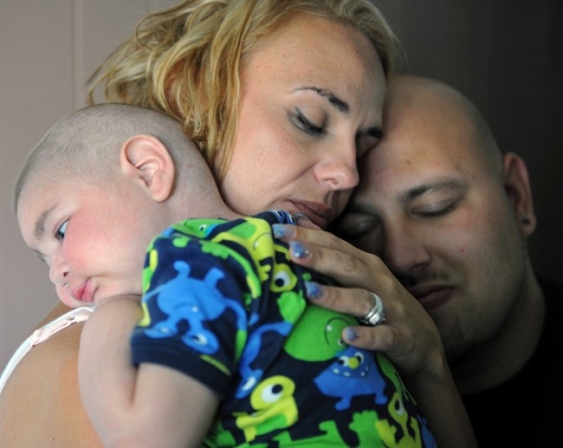Wish you a very happy and Prosperous New Year friends,
Have a great day
Category Archives: People
Russia Launching New Search Engine ‘Sputnik’ to Compete With Google

Rostelecom, the country’s state-controlled telecom service, has been charged with creating a search engine to compete with the likes of Google, as well as well local search-engine leaderYandex, which is based in the Netherlands, according to Reuters.
Even with state backing, however, Sputnik will face stiff competition. On its website, Yandex claims that it currently generates 62% of all search traffic in Russia.
But recent events have destabilized the company. Yandex lost its popular co-founder, Ilya Segalovich, in July to cancer. That led to a brief dip in Yandex’s stock, and doubt about the company’s long-term future.
So while Yandex is currently the market leader — and Google is close behind with roughly 25% of Russia’s search users — Rostelecom may be launching Sputnik at just the right time.
Rostelecom has already spent $20 million on the search engine, according to a report in Russia’s Vedomosti. The site will reportedly be accessible at http://www.Sputnik.ru, and will launch some time in the first quarter of 2014.
Rostelecom did not immediately respond to a request for comment.
A Breakdown of Twitter’s 200 Million Users

But who precisely are those users? And what are they doing on the microblogging network?
SEE ALSO: More Sunday Comics
In this Sunday comic, Nitrozac and Snaggy of The Joy of Tech take a stab at breaking down the millions of people who tweet — and, as it turns out, a lot of users are just spambots and parents spying on their kids.
Comic illustration provided by The Joy of Tech. Published with permission; all rights reserved.
Larry Ellison Opens Up About Steve Jobs’ Last Days

Ellison says that Jobs’ loss of strength was all the more striking given his gung-ho personality. “This was absolutely the strongest, most willful person I have ever met, and after seven years, the cancer even wore him out … He was just tired of fighting, tired of the pain.”
“Ellison revealed that Jobs eventually decided to stop his cancer treatment”
Ellison revealed that Jobs eventually decided to stop his cancer treatment, a move that “shocked” those close to Jobs. A few days later, on Oct. 5, 2011, Jobs passed away. “He decided — shocked Lorraine [Powell Jobs, his wife], shocked everybody — that the medication was gonna stop,” Ellison recalled. “He just pulled off the meds — I think on a Saturday or a Sunday. And by the following Wednesday he was gone.”
In a particularly moving moment, Ellison described his eulogy for Jobs. “My eulogy began, you know, I guess we’re all told that no one’s irreplaceable. I don’t believe that. I just don’t,” he said.
At another point in the interview, Ellison proclaimed that Jobs was this era’s equivalent of Pablo Picasso and Thomas Edison, and suggested that Apple is in trouble now that he is no longer around to lead the company.
Image: Justin Sullivan/Getty
The myths behind online pornography censorship
The UK plans to make internet service providers automatically block
pornographic websites. Tom Chatfield finds the idea alarming and
fundamentally flawed
Many things in porn are exaggerated, including the statistics regularly quoted to show how much pornography is on the web.
What is the most searched-for term on the web? Contrary to popular myth, it’s not “sex”, “porn”, “xxx”, or any other common search term for pornography. Instead, as a quick glance at services like Google Trendsshows, terms like “Facebook” and “YouTube” comfortably beat all of the above – as does “Google” itself. Onscreen as in life, it’s sport, celebrities and global news that command the most attention.
In fact, looking at lists of the world’s most-visited websites compiled bycompanies like Alexa, there’s strikingly little “adult” content. Search engines, social media, news and marketplaces dominate, with the world’s top pornographic site coming in at number 34, and just six others breaking into the top one hundred. As an excellent analysis by theMinistry of Truth blog notes, “overall, adult websites account for no more than 2-3% of global Internet traffic, measured in terms of both individual visits to websites and page views.”
All of this sits slightly strangely alongside recent hysteria and headlines (and dubious maths) in Britain. If you missed it, Prime Minister David Cameron announced his intention to prevent online pornography from“corroding childhood” by making internet service providers automatically block pornographic websites. Britain is set to become a place where internet users have to “opt in” to view pornography – a moral beacon in a world increasingly alarmed by the filth pouring out of its screens.
Except, of course, it isn’t. As author and activist Cory Doctorow pointed out in the Guardian when a similar proposal surfaced last year, filtering online content either requires people to look at every page on the internet, or a piece of software algorithmically to identify and filter out “inappropriate” content. With trillions of pages online, the first option is clearly impossible – and the second certain to generate an immense amount of false positives (not to mention failing to block an equal number of undesirable sites).
The result would be an opaque, piecemeal and ideologically incoherent mess. Should any site featuring nude images or videos be blocked automatically in an effort to shield the innocent? YouTube features extensive reserves of such content, as indeed do almost all image-sharing and social-media services; and that’s before you consider fiction, art and film containing material that’s explicit but not pornographic by any commonly understood measure (for instance, classical sculpture, Botticelli’s Venus, James Joyce’s Ulysses… the list is endless…). Censorship is a blunt instrument, rendered blunter still by automation – and there are few precedents to suggest that its wielding would either benefit those it’s supposed to protect, or deter the worst offenders it’s designed to suppress.
Indeed, the whole notion of an opt-in pornography register is in itself alarming. Would a list of households requesting an unfiltered internet remain secure and private – or could governments refrain from cross-referencing it with other potential indices of suspicion? How should citizens undertaking perfectly legal browsing of explicit materials feel about being listed on such a database – or about wanting to be free of arbitrary restrictions across countless sites and resources?
All of this also risks muddying the waters around the quite separate field of genuinely abusive images. Images of child abuse are unambiguously illegal across most of the world, and their creators and distributors are pursued by governments, internet service providers and corporations alike, via a mix of automated and investigative processes. Such images exist largely on peer-to-peer networks and covert forums, making any blocking service unlikely to be much help in their eradication – and possibly an unwelcome rival for resources and political attention.
Why are men scared of strong women?
MEN FIND IT DIFFICULT OT DEAL WITH STRONG, CAPABLE WOMEN COLLEAGUES! BUT IS THIS REALLY A GENDER ISSUE?
BALASUBRAMANI MARIAPPAN
Is it true that men constantly try to pull down women at the workplace? Why? Perhaps they do so because they consider the office, and in particular, the corridors of power, their original territory! And a woman walking down the same corridor is something they still haven’t got used to.
Or, maybe men are convinced that women are inferior, and so give them short shrift. Or, is it because knowing the weakness of their own sex, men fear that susceptible male bosses may give women colleagues more attention and bigger promotions?
Whatever the reason, the fact remains that a woman with a strong personality and even average looks can strike terror in the hearts of male colleagues for no fault of hers. If a woman has a mind of her own and dares to question a decision or make a point strongly, she is instantly labelled “enemy” for she has violated the traditional code of conduct between the sexes! And so as a protective response, men label her “difficult to work with”, “hard to get along”, “tough to handle” or “not willing to listen”. This is the global mantra of guys who find it difficult to accept a woman on an equal footing, intellectually or professionally.
Most women professionals realize early on that in order to be heard and taken seriously, they will have to adopt a somewhat serious mien and a no-nonsense approach. It is only strong women who make it to the top, others fall by the wayside. A softie just will not do, she will be an easy doormat for men to walk over. They will take her lightly and try to fix her in the slot they are most comfortable with — a biddable or sexy type who can be controlled through manipulation. But give men a stern, no-nonsense approach and they will stand at a distance and wonder what to make you.
But reflect upon the issue a bit, and you realize that the situation is not as simple as a male-female gender face-off. Certainly, the gender edge aggravates it, but the issue is more about fields of control rather than men not able to accept women at work. And so, as a male colleague puts it, “Men don’t get along even with each other in office situations, except when their work relationships are sharply defined as junior and senior. And when it comes to women, you have to be mature if you are not to feel challenged and diminished. The fact is that women at the top are all the strong ones, who have grown against a lot of opposition from colleagues.”
The competition between women at the same level is equally intense and dirty. And probably that’s how the top bosses like it to remain, jagged edges, unrealized dreams, unfulfilled desires, and circles just short of completion, all make for edgy people who will give it their last shot to move ahead, rather that sit back in sated glory.
And so insecure people all pull down each other, but when it comes to men and women, the situation takes a dramatic turn because at stake here is not just a promotion or hike, but the entire power play between the sexes. Traditionally, a man’s superiority and masculine image has come from the protector-provider role he has played towards women. The role a woman plays in evolution and the cycle of life is enough to make men feel inadequate in any case, and psychiatrists also talk about a man’s deep-seated fear of being rendered unnecessary and redundant. And so a strong woman who can step out and take him on at office as well, makes an insecure man feel emasculated and inadequate. In order to validate his own worth, a man may prefer women to lead lives of dependence and incompetence.
However, let us not ignore the fact that there is an increasing tribe of men who are more evolved and able to accept a woman as an equal being without seriously harming their own psyche. They treat women well, try to understand them, accept their thinking and go along with their ideas as much as with those of other men.
Here is to that increasing tribe of non-challenged men!
Police investigate Potato Theft
A GANG of thieves are in for a roasting after stealing 1.5 tonnes of potatoes.


BALASUBRAMANI MARIAPPAN
Potatoes were the prize of the green-fingered thieves.
It is as yet unclear whether the two crimes are linked or if another gang of spud thieves are chipping in. — Norfolk Police
Dying two-year-old to be parents’ best man
BALASUBRAMANI MARIAPPAN
A two-year-old boy with only weeks to live will serve as best man when his parents wed. Sean Stevenson and Christine Swidorsky had planned to wed next year but decided to move the ceremony up to Saturday so their son, Logan, who has leukaemia and other complications, could participate.
“We want Logan in our family pictures, and we want him to see his mother and dad get married,” Ms. Swidorsky said. Logan has Fanconi anemia, a rare disease that often causes cancer. He was diagnosed with acute myeloid leukaemia at 14 months and had a stem cell transplant a year ago. He lost one kidney to a tumour in March and has a mass on his other kidney.
Last week, doctors told the couple the boy would live only two to three weeks more.
“It’ll be the hardest thing I’ll ever do, is bury my son,” Stevenson said. “You know it’s coming, and you can’t do anything about it.”
Family and friends have pitched in to organize the wedding, while Logan spends his last few days resting in his parents’ home.
Swidorsky said the couple expects about 100 people to attend the wedding.
“The best thing for Logan is to be home with his parents,” she said, adding doctors told the couple “he would be in more pain in the hospital.”
“I just am thankful that I am able to bring my son home and have time with him and hold him before he goes,” Stevenson said. “So, in that sense, I feel lucky that I at least get to say goodbye to my son … and tell him it’s going to be OK.”
Swidorsky said she has learned a lot from Logan.
“He’s made me a better person,” she said. “He’s just an angel from heaven, and I’m going to miss him.”
Is your dog happy to see you? Look at its eyebrows to find out
Dogs use specific facial expressions to show how happy they are to see their owners, scientists have found.
BALASUBRAMANI MARIAPPAN
While most dog owners will recognise their pet’s wagging tail as a sign of joy, they may also want to pay more attention to their animal’s face the next time they walk in through the front door.
Animal behaviour experts have found the animals’ emotions are betrayed by specific facial movements that can reveal whether your dog really is pleased to see you.
Using high-speed cameras, the researchers tracked the changes in the faces of dogs in the moments they were reunited with their owners or when meeting a stranger for the first time.
They found that the dogs tended to move their left eyebrow upwards around half a second after seeing their owner.
When the animals were introduced to someone they had never met before, they moved their left ear back slightly.
If they were presented with an object they didn’t like, such as pair nail clippers, the animals moved their right ear instead.
Dr Miho Nagasawa, from the department of animal science at Azabu University in Sagamihara, Japan, said: “It is difficult to explain this difference in movement between the ears and eyebrows. “Dogs’ ears are prominent features used to convey emotional expression, therefore our results suggest that dogs were more cautious toward unfamiliar people.
“In contrast, eyebrow movement might indicate a visible response where by dogs attempted to look at their owners more intently.”
The researchers, whose study is published in the journal Behavioural Processes, placed 12 dogs in a room divided by a partition with some black curtains that opened briefly to all the dogs to glimpse what was on the other side.
Coloured tags were placed on the dog’s faces to allow a high speed camera to precisely track the movement of their features.
When the curtain opened, their owner, a stranger, a toy or an item they did not like was on the other side, allowing the researchers to record their response.
They found that the dogs moved their eyebrows upwards whenever they saw someone behind the screen, but far more when it was their owner, particularly on the left side.
The researchers suggest the subtle changes on different sides of their face are a reflection of activity in key parts of the brain that control emotions.
They also say it could because the animals were experiencing conflicted emotions – joy at seeing their owner but sadness at not being able to reach them through the partition.
Dr Nagasawa said: “One explanation for this result is that presentation of the owner elicited both negative and positive emotions.
“A negative response might appear … perhaps because the dogs could not approach and touch their owners despite seeing them through the partitions.”
The findings come after psychologists conducted research earlier this year that showed how many owners are able to detect a range of emotions in the facial expressions of their pets.
Dr Tina Bloom, from Walden University, in Minneapolis, found that even people with minimal experience of dogs could detect happy, sad, surprised and frightened expressions.
Her findings have suggested that humans have developed a natural empathy with dogs after evolving side by side for thousands of years.
Dogs have also been found to be adept at reading emotions in human faces and react to them.
Dr Nagasawa added: “Ownership is a significant social factor for dogs. This suggests that human-dog bonding relationships have a biological basis.
“Canids are highly social and communicate using an abundant array of facial expressions.
“These communication methods might play an important role in their communication with humans.”
Gene Expression
DOING GOOD AND FEELING GOOD HAVE VERY DIFFERENT EFFECTS ON THE HUMAN GENOME
BALASUBRAMANI MARIAPPAN
Scientists have found that different types of happiness have different effects on the human genome. Researchers from UCLA’s Cousins Center for Psycho-neuroimmunology and the University of North Carolina found that people who have high levels of eudaimonicness that come from having a deep sense of purpose and meaning in life — showed very favourable gene -expression and strong expression of antiviral and antibody genes.
However, people with relatively high levels of hedonic well-being — the type of happiness that comes from consummatory self gratification — actually showed just the opposite. They had an adverse expression profile involving high inflammation and low antiviral and antibody gene expression.
For the last decade, Steven Cole, A UCLA professor of medicine and a member of the UCLA Cousins Center, and his colleagues, including first author Barbara L. Fredrickson at the University of North Carolina, have been examining how the human genome responds to stress, misery, fear and all kinds of negative psychology.
In the present study, the researchers drew blood samples from 80 healthy adults who were assessed for hedonic and eudaimonic well being as well as potentially confounding negative psychological and behavioural factors. The team used the CTRA gene-expression profile to map the potentially distinct biological effects of hedonic and eudaimonic well-being.
 And while those with eudaimonic well-being showed favourable gene-expression profiles in their immune cells and those with hedonic well-being showed an adverse gene-expression profile, “people with high levels of hedonic well-being didn’t feel any worse than those with high levels of eudaimonic well-being,” Cole said. “Both seemed to have the same high levels of positive emotion. However, their genomes were responding very differently even though their emotional states were similarly positive,” he said. Cole explained what this study tells us — that doing good and feeling good have very different effects on the human genome, even though they generate similar levels of positive emotion. He asserted that the human genome is much more sensitive to different ways of achieving happiness than are conscious minds.
And while those with eudaimonic well-being showed favourable gene-expression profiles in their immune cells and those with hedonic well-being showed an adverse gene-expression profile, “people with high levels of hedonic well-being didn’t feel any worse than those with high levels of eudaimonic well-being,” Cole said. “Both seemed to have the same high levels of positive emotion. However, their genomes were responding very differently even though their emotional states were similarly positive,” he said. Cole explained what this study tells us — that doing good and feeling good have very different effects on the human genome, even though they generate similar levels of positive emotion. He asserted that the human genome is much more sensitive to different ways of achieving happiness than are conscious minds.
The study has been published in the current online edition of the journal Proceedings of the National Academy of Sciences.






![a-lot-of-dogs[1]](https://galaxyinvader.wordpress.com/wp-content/uploads/2013/08/a-lot-of-dogs1.jpg?w=700)

